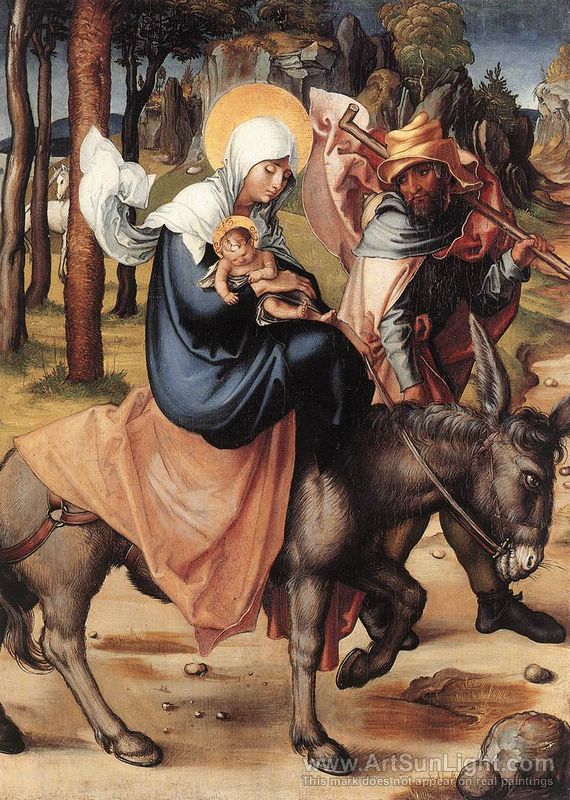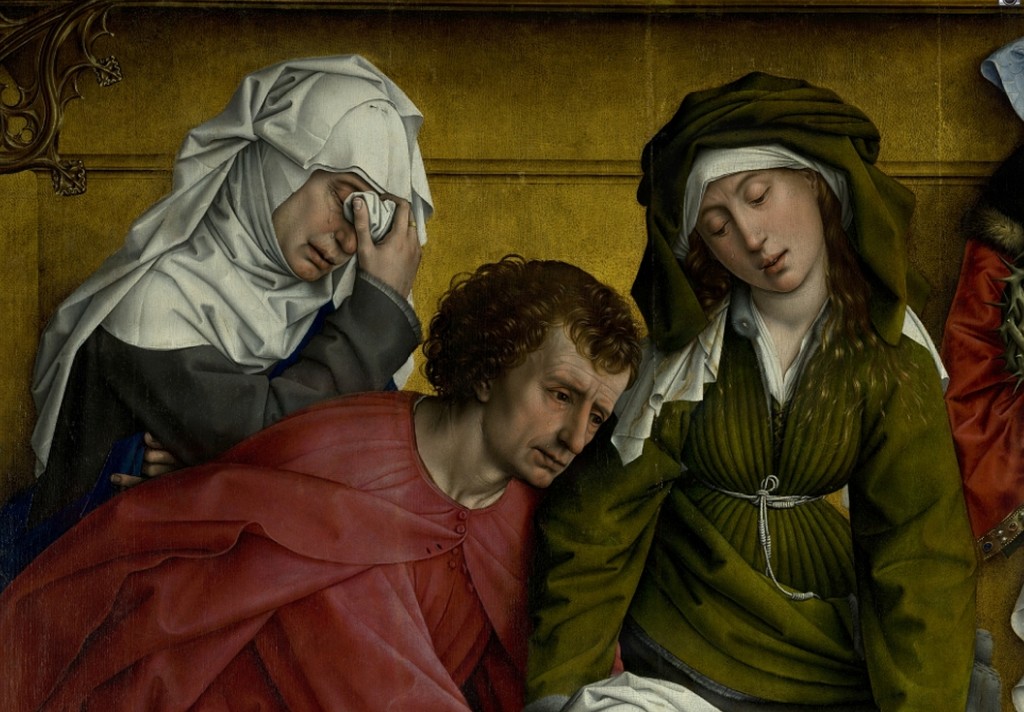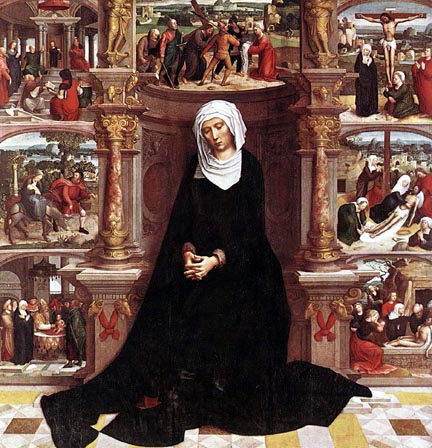Andre Malraux sought the key to humankind’s fate by a philosophical study of all the world’s art. His Metamorphosis of the Gods traced the evolution of the Gods in art. The demi-gods, the half eternal and the sacred art of the ancients transformed into a more humantic conception in line with a secularization and accessability…
…The very nature of worship changes. The cathedral was, among other things, a community. But in the fourteenth century, as society becomes increasingly secular, “the collective and liturgical faith of which the cathedral was a shining expression is replaced by a new relation between man and the divine: Christ does not address himself to all but to each.” The chief object of devotion becomes that “secret intimacy” with the divine of which Cardinal Newman would later say that it made the church a solitary place. “Communal faith is dismembered like an empire.”

—The Seven Sorrows of the Virgin: The Flight into Egypt circa 1496
Artist: Durer, Albrecht (Dürer / Albrecht Duerer / Durero)(German 1471-1528) Northern Renaissance Painter and Engraver.—Read More:http://www.artsunlight.com/artist-ND/N-D0007-Albrecht-Durer/N-D0007-129-the-seven-sorrows-of-the-virgin-the-flight-into-egypt.html
Private devotion brings with it pathos on one level, mysticism on another. Neither “the piety of woman who own an ivory Virgin” nor “the fervent murmer of the great mystics” has much in common with the faith that once rose before the great stone assemblies of the cathedrals. While the Gothic period was aglow with the triumph of Christ- while even Calvary was transfigured to the point where, in the Annunciation of reims, a laughing angel announced to mary the mystery of the Incarnation- religious art now emphasized suffering.

—Detail from Rogier van der Weyden’s
Descent from the Cross (1435)
showing Mary of Clopas, the Apostle John, and Salome
(the Virgin Mary has collapsed in John’s arms)—Read More:http://catholicdefense.blogspot.ca/2011/11/st-jude-and-brothers-of-jesus.html
On the mystical level, there is a “communion with pain, perhaps conceived as the essence of the secret of the world,” and expressed in sorrowful, thorn-crowned crucifixes like the Devout Christ of Perpignan. on the pathetic level,the cross becomes less a reminder of suffering than a source of compassion, which finds expression in the cult of Mary. She is no longer the majestic Mary of the Coronation. “The world in which the Eternal appeared, and the world in which Christ crowned the Virgin, fade before the world in which Christ crowned the Virgin, fade before the world of man in which the Mother gazes at her dead son.” ( to be continued)…

—“An obscurity rests over the origin of this picture, or perhaps we should rather say, that the Church, whilst granting the festival and bearing her willing testimony to the extraordinary Divine favors shown to the devotion of the pilgrims of Suriano, has been silent as to the history of the painting itself. This picture first appeared in the convent of Suriano in Calabria in the year 1530, and did not attract much popular regard, until the beginning of the following century, when the miracles and conversions wrought at Suriano made it a place of pilgrimage to the whole world. After a number of briefs, granted by successive pontiffs, and a severe examination of the facts, Benedict XIII, at length, appointed the 15th of September to be observed through the whole order in commemoration of the graces received before this remarkable picture.”—Read More:http://lifeofanunorsister.blogspot.ca/2012/02/our-lady-of-sorrows.html





 COMMENTS
COMMENTS